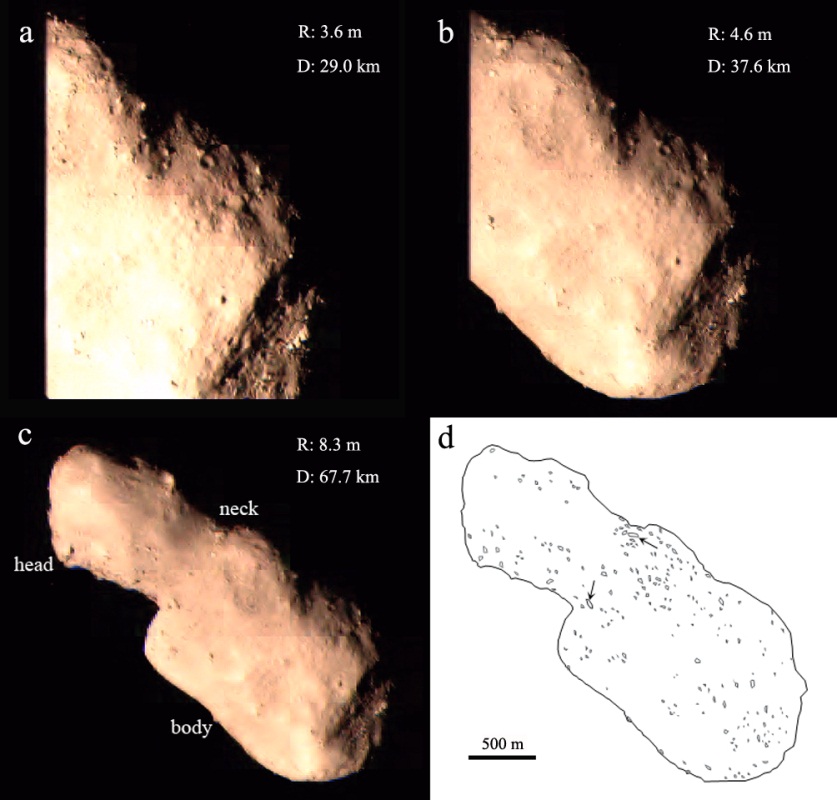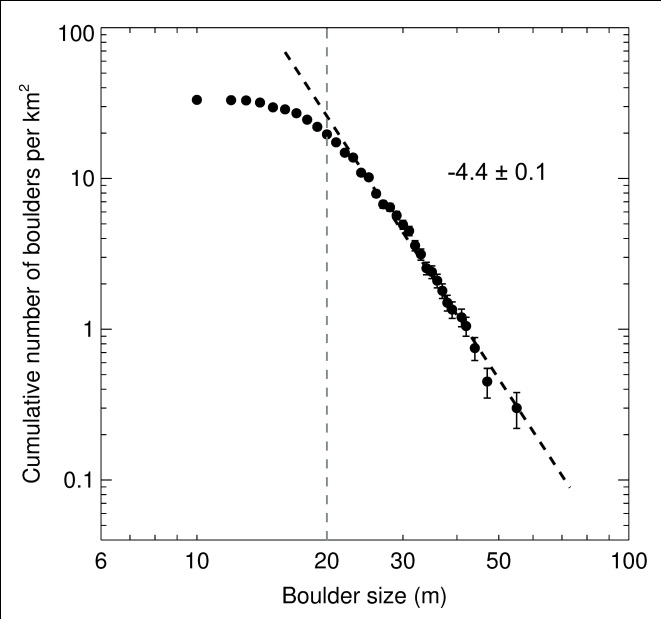Recently, Nature Publishing Group's journal Scientific Reports published the new work of Prof. Ji’s team, named Boulders on asteroid Toutatis as observed by Chang’e-2, which provided important information on the formation and evolution of Toutatis.
Boulders are ubiquitously found on the surfaces of small rocky bodies in the inner solar system and their spatial and size distributions give insight into the geological evolution and collisional history of the parent bodies. Comparative analyses of boulder SFDs on different asteroids can reveal processes of boulder formation and modification.
On 13 December 2012 at 8:29:58.7 UTC, Chang’e-2 successfully flew by the near-Earth asteroid 4179 Toutatis after accomplishing a lunar exploration phase and space-environment exploration at the Sun-Earth Lagrangian point. Chang’e-2’s flyby with a distance of 770 ± 120 m (3σ) from Toutatis’ surface ranks top for all known asteroid flyby missions, achieving a resolution better than 3 m/pixel for the closest image obtained at 18.3 km from Toutatis’ surface. The optical images acquired have clearly shown interesting geological features such as craters, boulders, lineaments and regolith, and an 800-meter-wide depression at the big end and the sharply perpendicular profile in the neck region.

By with JIANG Yun
Figure 1 Outbound images display boulders on the surface of Toutatis (from a to c) and their detailed positions in the sketch map (d).

By with JIANG Yun
Figure 2 The cumulative size-frequency distribution of boulders per unit area on the entire imaged surface of Toutatis.
In this work, a total of 222 boulders were identified over the imaged area (~ 6.68 km2) (Figure 1). They have sizes ranging from 10 to 61 m, with an average size of 22 m. The number density of boulders larger than 20 m over the Toutatis’ surface is ~ 17/km2, which is a bit smaller than that of Itokawa (~ 30/km2), but much larger than that of Eros (~ 2/km2).
The stark difference between Eros and Toutatis may result from the diverse formation process of boulders. The cumulative size-frequency distribution (SFD) of boulders per unit area exhibits a slope (power-index) of -4.4 ± 0.1 (Figure 2), which is indicative of great degree of fragmentation. Similar to Itokawa, Toutatis probably has a rubble-pile structure, as most boulders on its surface cannot solely be explained by impact cratering. In addition, the cumulative crater SFD has been used to estimate a surface crater retention age of approximately 1.6 ± 0.3 Gyr.
(Information Source: Purple Mountain Observatory, CAS)

